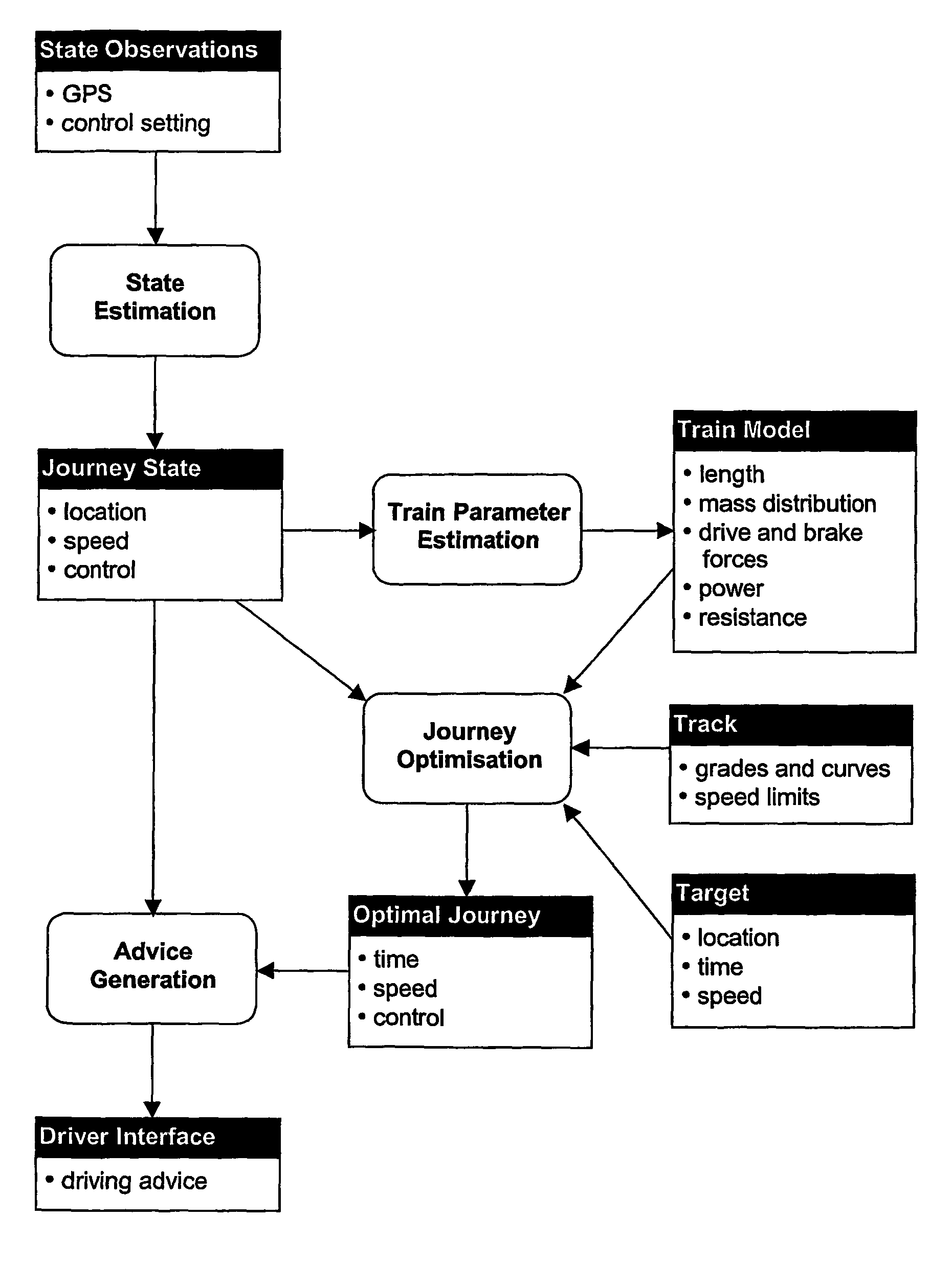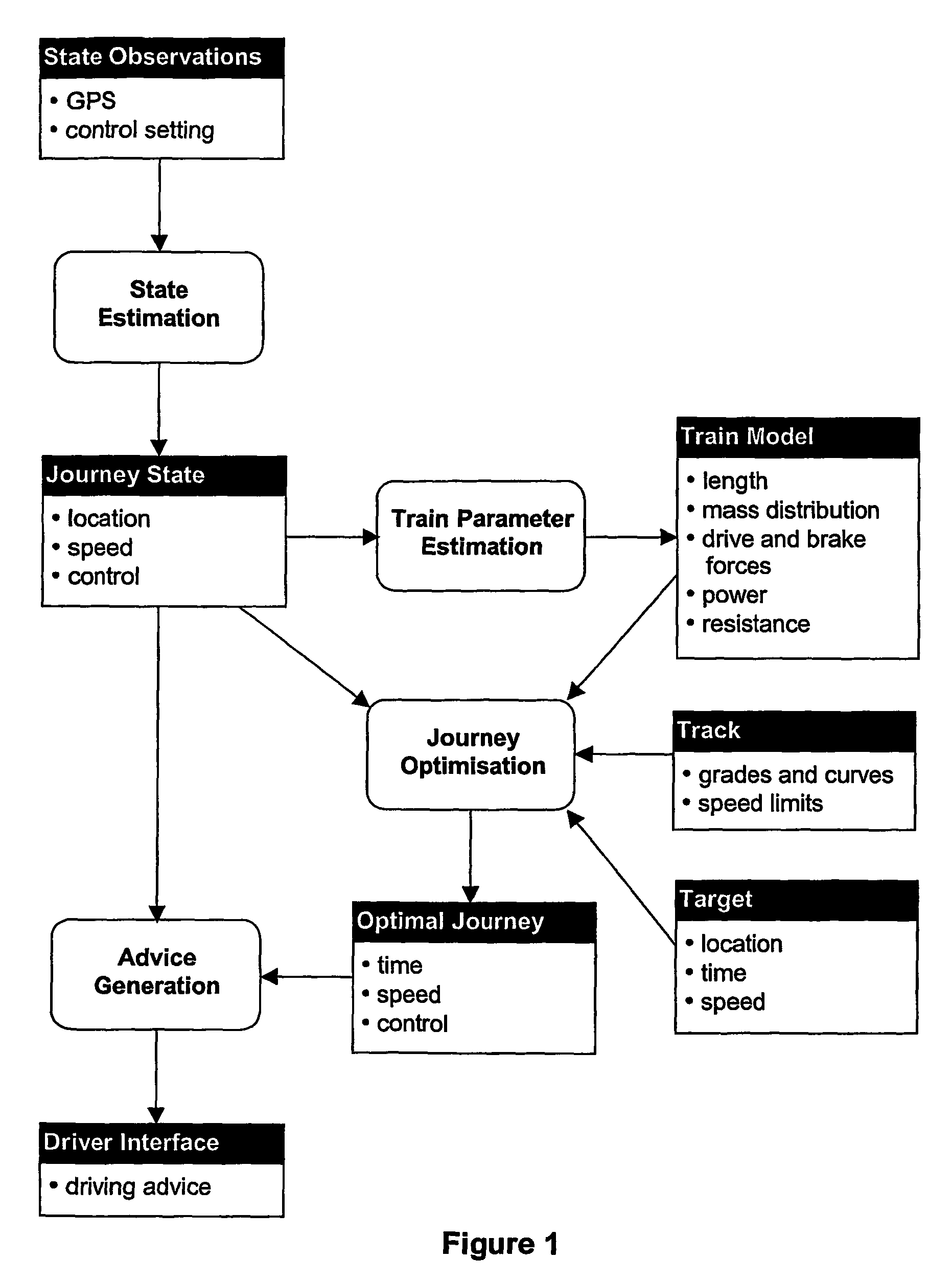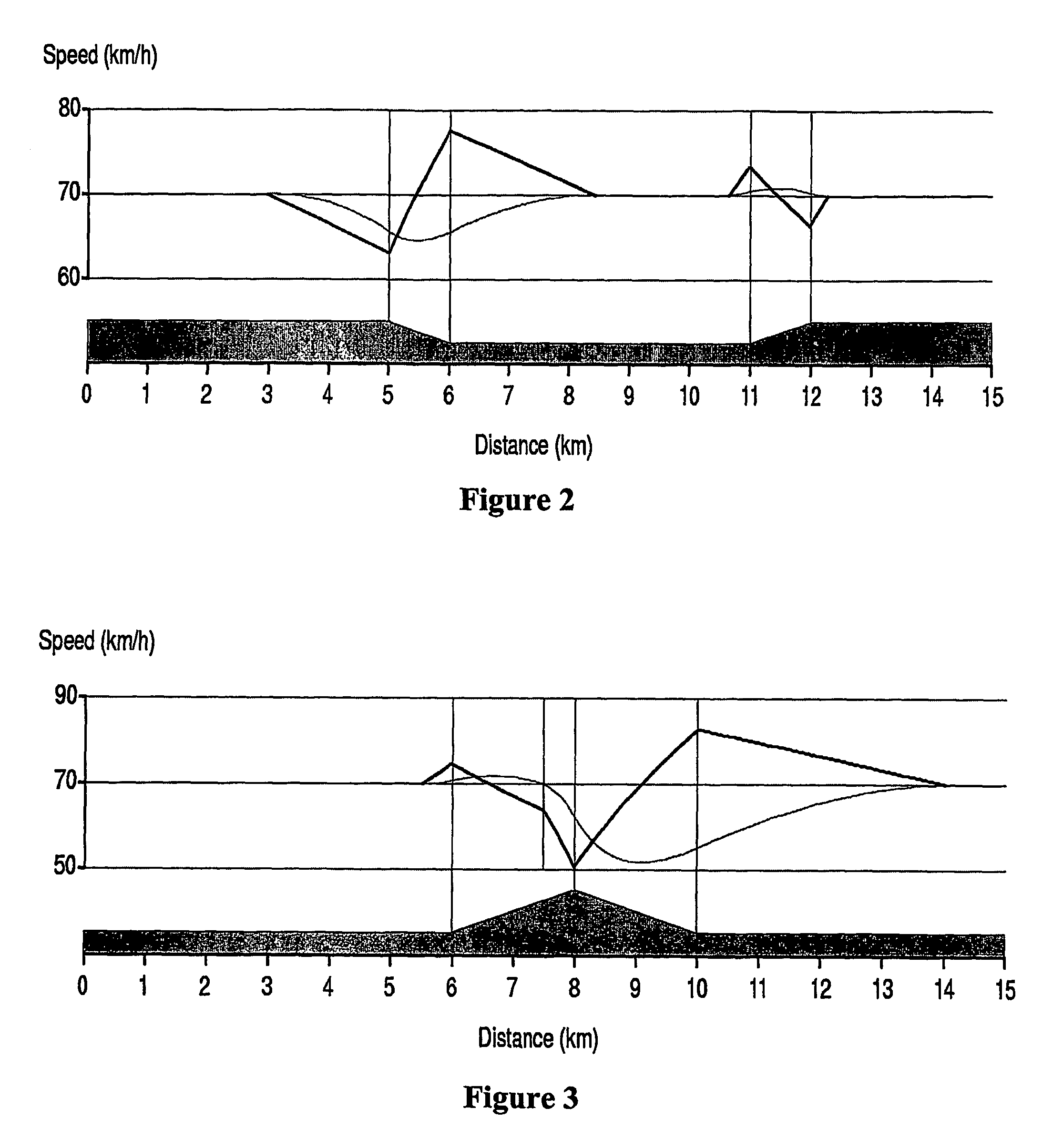System for improving timekeeping and saving energy on long-haul trains
a long-haul train and timekeeping technology, applied in the field of long-haul rail networks, can solve the problems of inefficient braking at high speeds, significant energy costs of railways, waste of energy making up lost time, etc., and achieve the effect of reducing the total energy used by trains
- Summary
- Abstract
- Description
- Claims
- Application Information
AI Technical Summary
Benefits of technology
Problems solved by technology
Method used
Image
Examples
example
[0120]In the following discussion of an example of the invention, the following notation is used:
[0121]Train
[0122]m train mass (kg)
[0123]FD(v) maximum drive force at speed v (N)
[0124]FB(v) minimum brake force at speed v (N)
[0125]R(v) resistance force at speed v (N)
[0126]ηR regenerative brake efficiency
[0127]Route
[0128]The length and mass distribution of a train can be used with a simple averaging procedure to transform the track gradients and speed limits so that the motion of a point mass train on the transformed track corresponds to the motion of the real train on the real track.
[0129]G(x) effective force due to gradient at distance x (N)
[0130]h(x) effective elevation of the track at x (m)
[0131]v(x) effective speed limit at x (ms-1)
[0132]State Variables
[0133]x distance along the route (m)
[0134]t(x) time taken to reach distance x (s)
[0135]v(x) speed at distance x (ms-1)
[0136]J(x) energy cost at distance x (J)
[0137]Control and Adjoint Variable
[0138]u applied drive force 0≦u≦FD(v) or...
PUM
 Login to View More
Login to View More Abstract
Description
Claims
Application Information
 Login to View More
Login to View More - R&D
- Intellectual Property
- Life Sciences
- Materials
- Tech Scout
- Unparalleled Data Quality
- Higher Quality Content
- 60% Fewer Hallucinations
Browse by: Latest US Patents, China's latest patents, Technical Efficacy Thesaurus, Application Domain, Technology Topic, Popular Technical Reports.
© 2025 PatSnap. All rights reserved.Legal|Privacy policy|Modern Slavery Act Transparency Statement|Sitemap|About US| Contact US: help@patsnap.com



